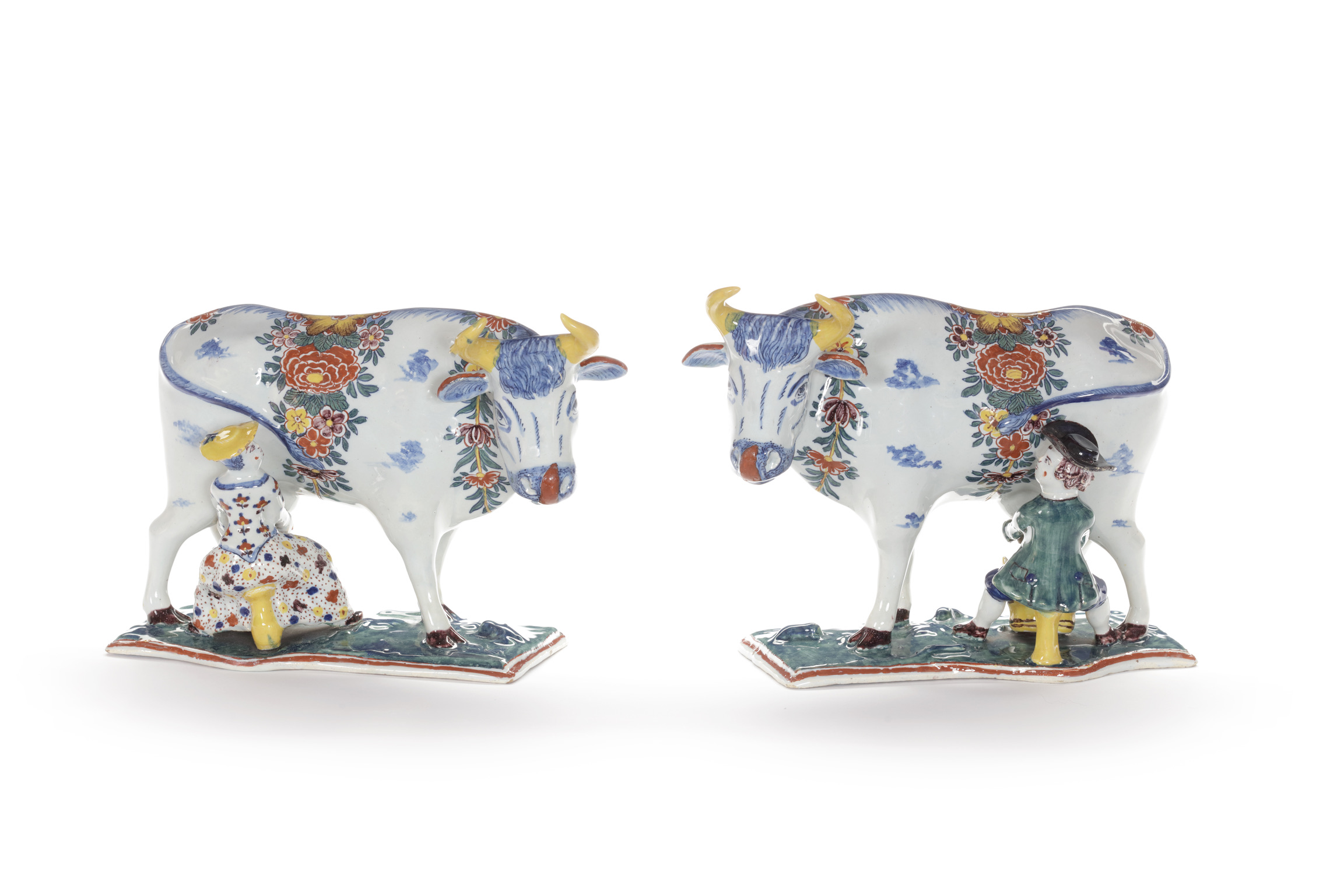![]()
Images on this website are licensed under a
Creative Commons Attribution-NoDerivs 3.0 Unported License.
OBJECT
•D2352. Pair of Polychrome Milking Groups
Delft, circa 1770
Each marked AP in iron-red for Anthonij Pennis, the owner of De Twee Scheepjes (The Two Little Ships) factory from 1764 to 1770, or his widow Pennis-Overgaauw, the owner of the factory from 1770 to 1782
Each cow with a blue-spotted hide, a blue muzzle, ears, forelock, eyes, spine and tail, yellow horns, manganese hooves and an iron-red lapping tongue, wearing garlands of colorful flowers around its neck and back, and modeled affronté while being milked by a lad wearing a manganese tricorn hat, a green jacket and blue breeches and manganese shoes, or by a maid wearing a yellow hat, a yellow, iron-red, manganese and blue flower patterned white bodice and skirt and manganese shoes, each seated with a pail between his or her feet at the semicircular front of the low green base with the top molded with frogs.
DIMENSIONS
Height: 16.5 cm. (6.5 in.)
NOTE
Cows are the most famous and beloved subjects depicted in Dutch Delftware. Since the eighteenth century they have adorned mantelpieces, furniture and window sills. They were always produced in pairs, with their heads turned towards each other and tongues lapping.
SIMILAR EXAMPLES
A similar milking group on a low base is illustrated by De Jonge in Delfts Aardewerk, p. 300, pl. 187, and in Delft Ceramics, p. 135, ill. 142. Three other pairs are illustrated in Aronson 2005, p. 50, no. 47, Aronson 2018, pp. 92-93, no. 56 and Aronson 2020, pp. 98-99, no. 52. A pair of these models on a slightly higher base is illustrated by Charleston and Lunsingh Scheurleer, no. 105. Another pair in which both of the milkers are lads was in the Vromen Collection, illustrated by Morley-Fletcher and McIlroy, p. 218, no. 3; and one of those examples is illustrated in Vrienden van de Nederlandse Ceramiek, 48, pl. 53.









